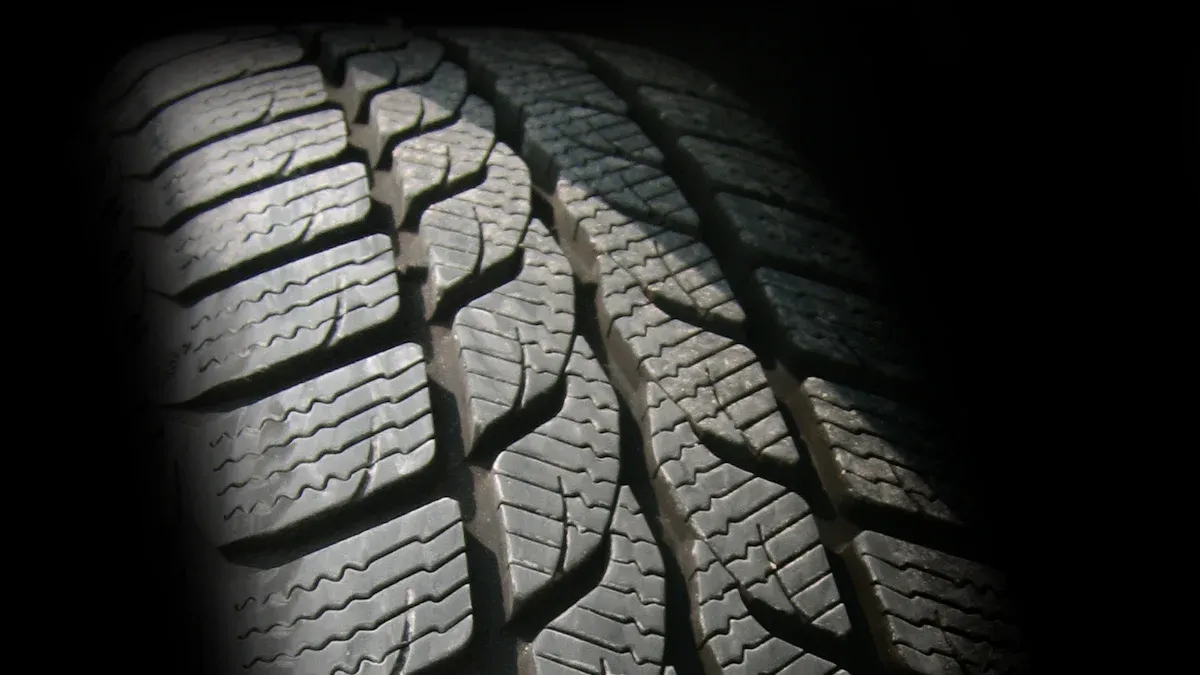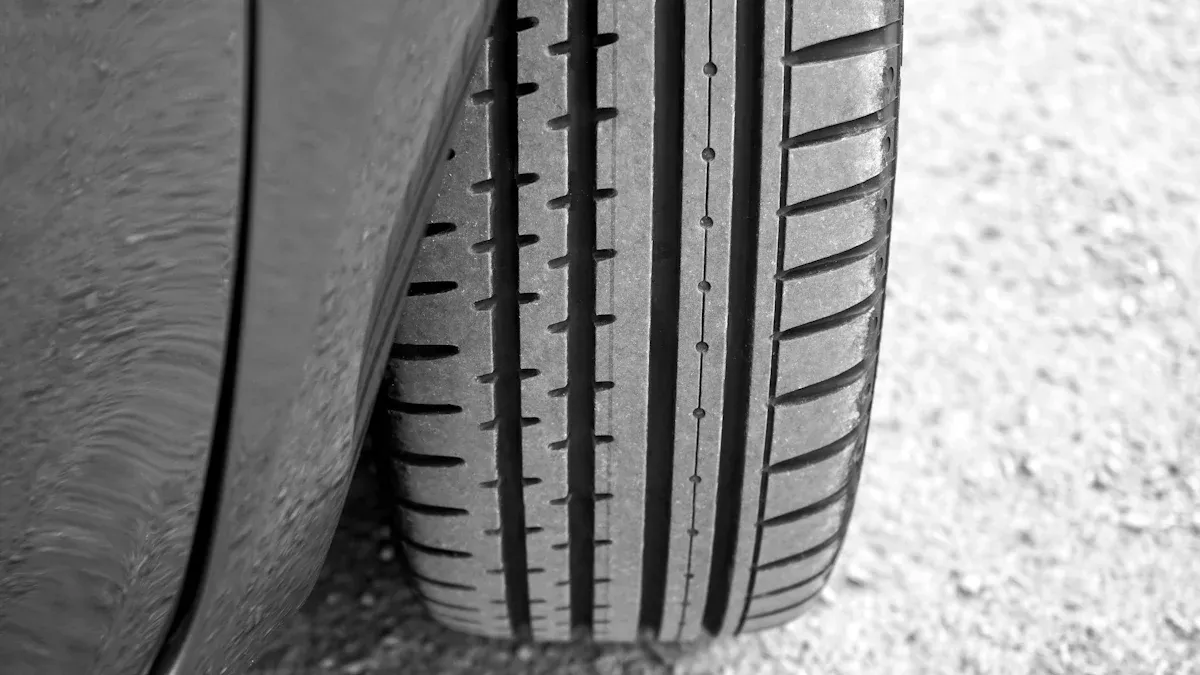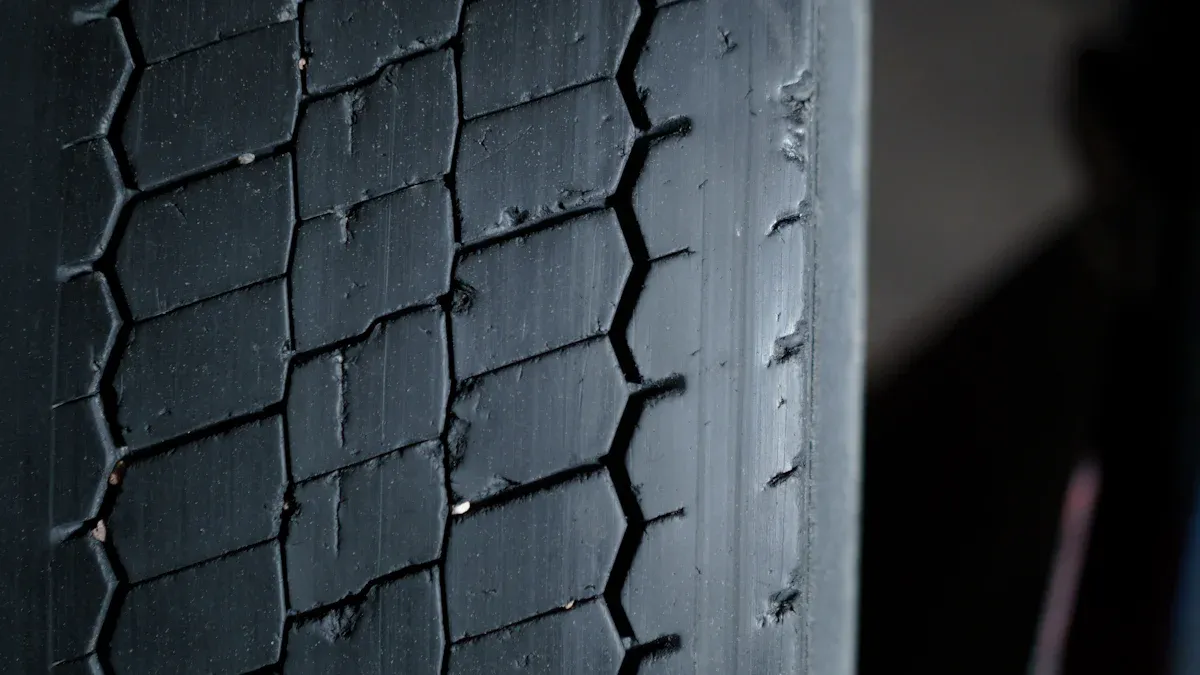
Tread depth is very important for the safety of high-risk cargo fleets. You need to know that low tread depth can cause serious accidents and expensive damage. If you ignore this important check, you risk your vehicle and your whole fleet. Regular pre-trip inspections can make sure each tire is safe. Focusing on tire tread depth can stop dangerous problems and keep your cargo and drivers safe.
Punti chiave
Check tire tread depth often to keep safe and avoid accidents. Aim for at least 4/32 inch for steer tires and 2/32 inch for others.
Use easy methods like a misuratore di profondità del battistrada or the penny test to measure tread depth quickly and correctly.
Do careful pre-trip inspections to find tire problems early. Check tread depth, tire pressure, and any visible damage.
Teach your drivers and maintenance staff about tire safety. Smart teams help follow rules and lower risks.
Follow Department of Transportation rules to avoid fines and keep your fleet running. Regular checks are very important.
Tread Depth Importance

Rischi per la sicurezza
In high-risk cargo fleets, having low tire tread depth can be very dangerous. When tread depth is too low, the chance of accidents goes up. Here are some important safety issues with low tread depth:
Distanze di arresto più lunghe: Less tread depth means less grip, especially on wet roads. This makes your vehicle take longer to stop, which raises the chance of crashes.
Aquaplaning: As tread depth gets lower, hydroplaning becomes more likely. This happens when water builds up between the tire and the road, making it hard to steer.
Scoppio degli pneumatici: Worn tires can blow out more easily, especially when driving fast. A sudden tire failure can cause serious accidents.
Rear-End Collisions: Tires with tread depth under 2/32 of an inch greatly raise the risk of rear-end crashes. You might not stop in time to avoid hitting another car.
Il minimum tread depth for commercial vehicles is 4/32 of an inch for steer tires and 2/32 of an inch for other tires. Regular pre-trip checks help make sure your tires are safe and meet these rules.
Conformità legale
Legal compliance is also very important for keeping proper tread depth in your fleet. Rules set by agencies require profondità minima del battistrada for safety. Here’s what you should know:
Tipo di gomma | Profondità minima del battistrada |
|---|---|
Pneumatici per la guida | 4/32 di pollice |
Drive Tires | 2/32 di pollice |
Trailer Tires | 2/32 di pollice |
According to the Department of Transportation (DOT) rules, any tire on the front wheels of a commercial vehicle must have a tread depth of at least 4/32 of an inch. This rule is crucial for good grip, especially in bad weather.
Not following these rules can lead to serious problems. Breaking tire safety rules can get your vehicle taken out of service right away. In 2021, the Commercial Vehicle Safety Alliance (CVSA) checked over 40,000 commercial trucks. More than 6,700 trucks were taken out of service for violations, with tire problems being the second most common reason.
Regular checks and following legal rules not only keep you safe but also save your fleet from expensive fines. By measuring tread depth during every pre-trip inspection, you can stay compliant and improve the safety of your operations.
Measuring Tire Tread Depth

Measuring tire tread depth is very important for safety in high-risk cargo fleets. You can use simple methods or special tools to check if your tires are okay.
Manual Techniques
You can measure tire tread depth by hand using easy methods. Here are two good ways:
Tire Tread Depth Gauge: This tool gives you exact measurements. You put the gauge into the tire’s tread grooves to see how deep they are. This method is cheap and fast.
Test della Moneta: This quick check only needs a penny. Put the penny into the shallowest groove with Lincoln’s head upside down. If you can see all of Lincoln’s head, your tread depth is less than 2/32 inch. This means you need to get a new tire.
While manual gauges are helpful, they do not show pictures. This makes it hard to prove uneven wear or sidewall problems. Visual checks, especially with camera technology, can take clear pictures and give detailed reports.
Automated Tools
Automated tools can really help you measure tire tread depth correctly and quickly. Here are some advanced choices:
Tool/Technology | Descrizione |
|---|---|
ContiConnect Solutions | Gives automated tread depth measurements to help lower fleet costs. |
IntelliTread | A drive-over system that checks tread depth in real-time, connected to cloud alerts for tire conditions. |
Anyline Tire Tread Scanner | Uses AI and computer vision for accurate tread depth checks with a smartphone or tablet, can be added to apps. |
These automated systems make inspections faster and more accurate. For example, they can take tire tread pictures and adjust them to remove distortion. This can get a depth error of less than 0.2 mm. Also, advanced methods like Mask R-CNN with ResNet50 for tire detection can reach a mean average precision (mAP) of 0.6081, making them effective and precise for checking tire tread.
Regular checks are very important, whether you use manual or automated ways. Monthly checks for tire pressure and tread depth are a good idea. You should also rotate your tires every 5,000 to 7,500 miles to keep wear even. By keeping proper tread depth, you can avoid accidents and make sure your fleet runs safely.
Best Practices for Fleet Safety
Ispezioni pre-viaggio
Doing a careful pre-trip inspection is very important for keeping high-risk cargo fleets safe. You should use a detailed checklist to make sure your tires are okay. Here are some key steps to add to your pre-trip inspection checklist:
Check tread depth: Front tires need at least 4/32″ and rear tires need 2/32″.
Confirm tire pressure according to vehicle guidelines.
Look for any damage on the tires or sidewalls.
Ensure all lug nuts are tight and check for rust or cracks.
Make sure valve stems are capped and dual tires are spaced evenly.
Check hub seals for leaks.
Regular inspections help you find uneven wear. This can show problems like low air pressure or misalignment. Checking tires often can stop blowouts and tread separations, which cause many accidents. Well-kept tires help vehicles handle better and grip the road, making it safer overall.
Personnel Training
Training your drivers and maintenance staff on tire safety is very important for following rules. You should stress how important regular tire checks are. Here are some best practices for good training:
Teach staff why proper tread depth matters for safety.
Start maintenance programs to improve safety and rule-following.
Use technology to monitor tire conditions and help follow rules.
By investing in training, you make sure your team knows how important tire care is. This knowledge helps them follow tread depth rules and makes your fleet safer.
Regular pre-trip inspections and well-trained staff are key parts of a good fleet safety plan. By focusing on these practices, you can lower the chance of accidents and keep your drivers and cargo safe.
In conclusion, checking tire tread depth is very important for keeping high-risk cargo fleets safe and following the law. Doing regular pre-trip inspections helps you find problems that might cause accidents. Keep these main points in mind:
Tire tread depth affects how well your vehicle grips the road, especially when it’s wet or icy.
The Department of Transportation requires a minimum profondità del battistrada of 2/32′′ for commercial trucks, but many states want at least 4/32′′.
Regular checks can stop blowouts and make sure your tires have good traction.
By focusing on these practices, you make your fleet safer and follow the rules.
FAQ
What is the minimum tread depth for tires in high-risk cargo fleets?
The minimum tread depth for steer tires is 4/32 of an inch. For drive and trailer tires, it is 2/32 of an inch. Regular tire inspections help you maintain these standards.
How often should I check tire tread depth?
Dovresti controlla la profondità del battistrada delle gomme during every pre-trip inspection. Regular tire maintenance ensures safety and compliance with legal requirements.
What tools can I use for measuring tread depth?
Puoi usare un misuratore di profondità del battistrada for accurate measurements. Alternatively, you can perform the penny test for a quick check of your tire tread.
Why is tire maintenance important for my fleet?
Tire maintenance is crucial for safety. Proper tread depth improves grip, reduces stopping distances, and minimizes the risk of blowouts, especially in high-risk cargo fleets.
What are the consequences of neglecting tire inspections?
Neglecting tire inspections can lead to accidents, costly repairs, and legal penalties. Regular checks help you avoid these issues and keep your fleet safe.
Vedi anche
L'importanza di monitorare la profondità del battistrada delle gomme per la sicurezza
Utilizzo di un calibro per la profondità del battistrada per misurazioni precise






